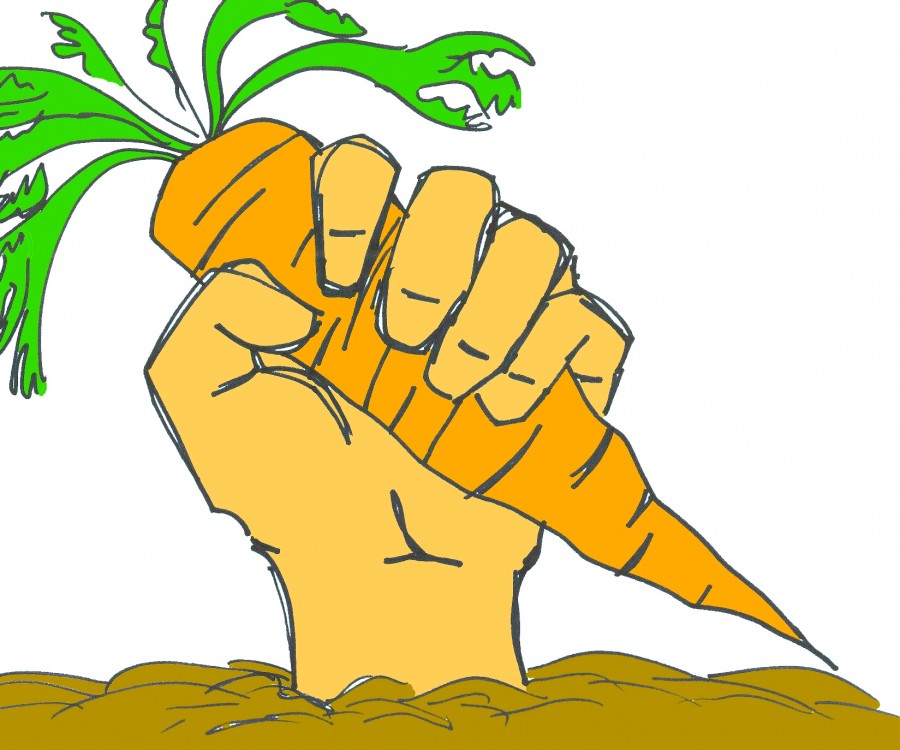
On a drizzly April day in Washington, D.C., 60 food workers and labor organizers from across the country gathered in an office building downtown. There was an African immigrant street vendor from New York City; a black apple picker from upstate New York; a white, 20-something former bartender from Cincinnati. There were Latino farmworkers from California’s Central Valley; Walmart workers from Oakland; a food-processing worker from Brooklyn. The diversity of the workers gathered for the fifth annual summit of the Food Chain Workers Alliance (FCWA) reflected the diversity of food workers nationwide.
The “food movement” is complex and often misunderstood. Read snarky Slate articles and you might be led to believe the movement is a white, elitist phenomenon whose poster child is a Lululemon-wearing, latte-sipping Whole Foods shopper and whose de facto guru is Michael Pollan. In other words: out of touch with working Americans.
But the people on the frontlines of the struggle to make healthy, sustainable, local food accessible to all Americans defy this stereotype. At its heart, the movement includes the workers who harvest the peppers, raise the chickens, process the pork, bus the dishes, take the orders, check out the groceries, truck the wares and more.
These food workers now have a unified voice through the growing FCWA. Started in 2009 by nine organizations to unite workers across the food sector, the FCWA has since expanded to 25 member groups, representing over 300,000 workers. “What is exciting is seeing all these groups come together to fight for a shared vision,” says Diana Robinson, the FCWA’s campaign and education coordinator.
The FCWA is based on the principle that a farmworker picking apples and a clerk stocking shelves at Walmart share many of the same struggles. The 20 million workers in the U.S. food sector are disproportionately poor. Food workers use food stamps at a rate more than 50 percent higher than the average American worker, according to FCWA research, and food workers suffer food insecurity at almost twice the national rate.
Workers in this sector, encompassing production, processing, distribution, retail and food service, not only face low wages, but also hardships such as a lack of paid sick days. “In our national survey of food workers,” says FCWA Co-Director Joann Lo, “we found a full four out of five workers who harvest, process, distribute, sell or cook our food don’t have paid sick days or don’t know if they do, which most likely means they don’t.”
Building up the power of these workers is what inspired the founders of FCWA. The food industry has long understood the benefits of vertical integration — the wonky term for owning enterprises up and down the supply chain. In the chicken business, for example, vertical integration means control over not just the raising of chickens, but also the production of their feed and the processing needed to get them to market.
In 2008, food worker organizers started to have a conversation about what it would look like to have vertical integration in worker power: connections between the formerly disparate elements of worker organizing across the food chain. The FCWA was born a year later.
Since then, the group has contributed to big victories, including an increase in the minimum wage for tipped workers in New York State and paid sick days for workers in New York City. “One of our biggest victories,” Lo says, “is the leadership role we played in the development and adoption of the Good Food Purchasing Policy in Los Angeles and getting Mayor [Rahm] Emanuel to endorse the policy for Chicago.” The policy in L.A. is translating into over $130 million in annual municipal and school food purchases made with workers and sustainability in mind.
At the summit in Washington D.C., the FCWA was coming together to decide on joint campaigns and policy priorities for the coming year, and to join in solidarity rallies, such as a demonstration outside a Walmart store near Union Station.
I’d come with a recording team from StoryCorps to capture one-on-one worker conversations for Voices of the Food Chain, an initiative recently launched with the FCWA.
Most of these workers were only just meeting each other at the summit, but all of them would come out of the small recording room with big smiles. “I had no idea,” Ruth Faircloth said to me, wiping away her tears, “that our struggle was the same.” Faircloth, a former farmworker from upstate New York who works with the Rural and Migrant Ministry, draped her arm around Velia Perez, a former farmworker and current food processing worker, and said, “This is my sister.”
Again and again, I would hear these workers express a sense of connection and an understanding of their shared fate. In these conversations, it was also clear that the workers were coming together not only to secure better wages and conditions for themselves, but also to promote greater sustainability, animal welfare and resilience across the food system for all of us. These workers were as passionate about fighting for humane, local, sustainable food as anyone with a dog-eared copy of “The Omnivore’s Dilemma” on their bookshelf.
As for the stereotypes of foodies? We hear they don’t care about workers like these; that they care more about the terroir of their turnips or the heritage of their turkey than the workers who harvest their vegetables or slaughter their livestock. But what I have seen on the frontlines of the food movement is a different story: The foodies I know care as deeply about protecting food workers as they do about the provenance of their vegetables or their meat. All across the country, I’ve been hearing a call for better wages and better food — from eaters and from workers. It’s getting harder and harder to write off foodies as uncaring fancy fennel lovers and food workers as only caring about their paycheck.
In this we’re-in-it-together spirit, there is real power. Uniting eaters with workers holds enormous potential to shift the food system toward what we all want to see: greater sustainability, animal welfare and better working conditions. Of course, it won’t happen overnight, but I’m thrilled to report the conversation has started.
Anna Lappé is the author of “Diet for a Hot Planet: The Climate Crisis at the End of Your Fork and What You Can Do About It” and a co-founder of the Small Planet Institute and Real Food Media Project.
3 WAYS TO SHOW YOUR SUPPORT
- Log in to post comments














